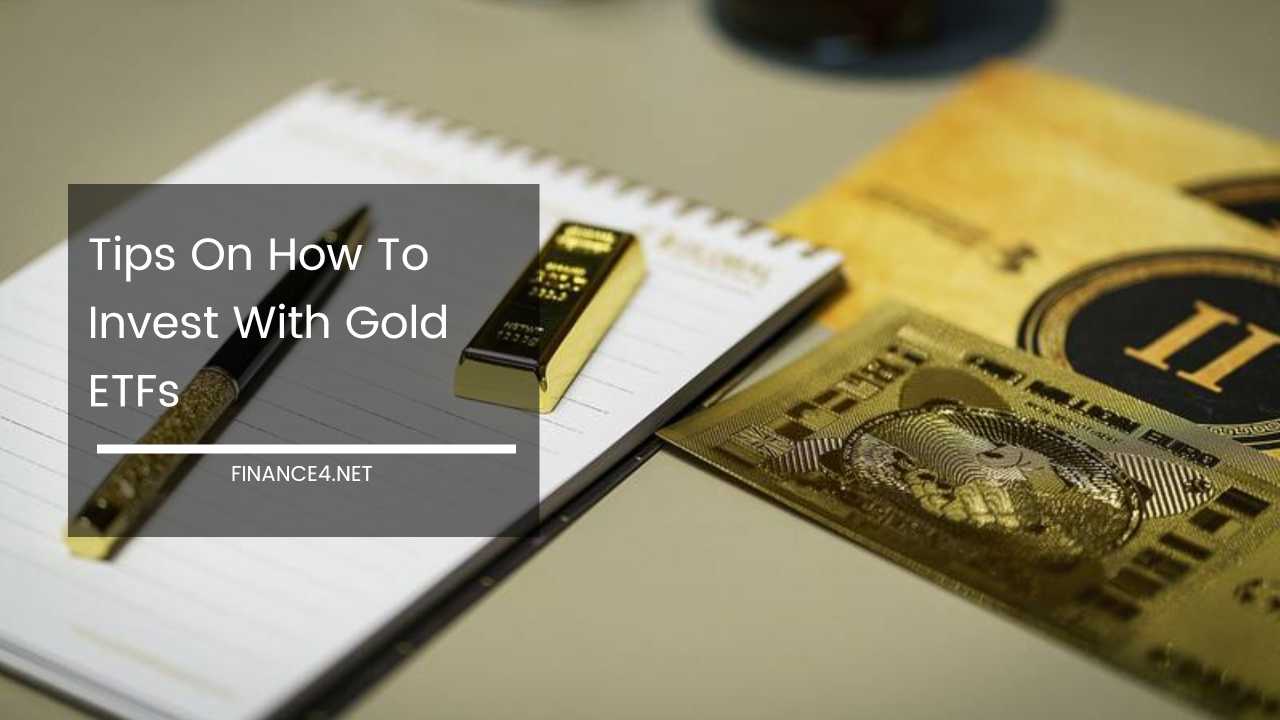Gold ETFs: Your Guide to Secure Gold Investment

Mastering the Shine: A Comprehensive Guide to Investing in Gold ETFs
The global financial crisis of 2008 left a lasting scar on investors’ psyches. The frantic search for stability and security propelled many towards gold, a time-tested haven during economic turmoil.
However, physically buying gold presents its own set of challenges. Fluctuations in price, coupled with the inconvenience and cost of storage and insurance, can deter potential investors.
Enter Gold Exchange-Traded Funds (Gold ETFs). These innovative instruments offer a compelling way to participate in the gold market while enjoying the advantages of modern financial tools.
This comprehensive guide delves into the world of Gold ETFs, equipping you with the knowledge and strategies to make informed investment decisions.
Demystifying ETFs: A Basket of Opportunities
An ETF, or Exchange-Traded Fund, is a basket of investments that trades on a stock exchange just like a single stock. It can hold a diverse range of assets, including stocks, bonds, commodities (like gold), or a combination thereof.
This structure resembles a mutual fund; however, unlike mutual funds, ETF shares trade throughout the trading day, allowing for greater flexibility and potentially more precise entry and exit points.
ETFs also boast generally lower expense ratios due to their efficient structure and lower portfolio turnover.
Gold Takes Center Stage: Understanding Gold ETFs
Gold ETFs are a specific type of ETF designed to track the price of gold. They are traded on major stock exchanges worldwide, providing investors with convenient access to this valuable commodity.
Each Gold ETF holds assets that mirror the gold price, often achieved through financial instruments called derivatives.
While some Gold ETFs may hold some physical gold bullion, their primary function is to offer a secure and hassle-free alternative to owning physical gold.
Unlocking the Benefits of Gold ETFs
Investing in Gold ETFs presents a multitude of advantages for investors seeking exposure to the gold market:
- Convenience and Security: Gold ETFs eliminate the need for physical storage and the associated security concerns. Investors can avoid the risks of theft or loss that come with owning physical gold.
- Reduced Costs: Trading fees associated with Gold ETFs are typically lower compared to trading physical gold or individual stocks. This translates to a more cost-effective way to participate in the gold market.
- Enhanced Liquidity: Gold ETFs trade throughout the trading day, offering greater liquidity compared to physical gold. This allows investors to easily buy and sell their holdings when desired.
- Accessibility: Gold ETFs allow investors to participate in the gold market with smaller amounts of capital compared to buying physical gold bars. This makes it a viable option for a wider range of investors.
- Portfolio Diversification: A small allocation of Gold ETFs within a broader portfolio can provide valuable diversification. Gold’s historical tendency to move in the opposite direction of stocks can potentially act as a hedge against inflation or market downturns, helping to stabilize your portfolio’s overall performance.
Prudence Before Investment: Essential Considerations
Before diving into the world of Gold ETFs, it’s crucial to carefully consider several factors:
- Understanding Derivatives: Gold ETFs often utilize derivatives to track the gold price. While these instruments generally pose minimal risk, it’s essential to understand how they work and the potential risks involved. Consulting with a financial advisor can be beneficial in this regard.
- Choosing the Right Gold ETF: Conduct thorough research to compare different Gold ETFs. Key factors to consider include expense ratios (annual fees), liquidity (trading volume), and the specific underlying assets held by the ETF. Choose an ETF that aligns with your investment goals and risk tolerance.
- Investment Goals: Align your investment strategy with your financial objectives. Gold ETFs are suitable for long-term wealth preservation or portfolio diversification, but they may not be ideal for short-term gains chasing strategies.
- Liquidity Risk: Consider the liquidity of the specific Gold ETF you’re interested in. Less liquid funds may be harder to buy or sell quickly, potentially impacting your ability to exit your investment when desired.
Taking the Plunge: Getting Started with Gold ETFs
- Seek Professional Guidance: Consulting a reputable financial advisor with experience in Gold ETFs can be invaluable. They can assess your risk tolerance, investment goals, and overall portfolio to determine if Gold ETFs are a suitable fit for you.
- Open a Brokerage Account: To buy and sell Gold ETFs, you’ll need a brokerage account. Choose a reputable broker with a user-friendly platform, competitive fees, and a strong track record.
- Conduct Thorough Research: Don’t be afraid to delve deep! Research different Gold ETFs, compare their expense ratios, underlying holdings, and historical performance. Understand the potential risks and rewards before investing.
Investing in Gold ETFs: A Long-Term Play
By incorporating Gold ETFs into your investment strategy, you can potentially enhance your portfolio’s resilience and stability.
Beyond the Basics: Advanced Strategies for Gold ETFs
While the core principles of investing in Gold ETFs remain constant, there are some advanced strategies to consider for seasoned investors:
- Dollar-Cost Averaging (DCA): This strategy involves investing a fixed amount of money in your chosen Gold ETF at regular intervals, regardless of the current gold price. This approach helps average out the cost per unit over time, mitigating the impact of market volatility.
- Hedging with Gold ETFs: Gold’s historical negative correlation with stocks makes it a potential tool for hedging against market downturns. By including a small allocation of Gold ETFs in your portfolio, you can potentially offset losses in other asset classes during economic turmoil.
- Actively Managed Gold ETFs: While most Gold ETFs passively track the gold price, a small number are actively managed. These ETFs are overseen by fund managers who aim to outperform the gold price through strategic selection of underlying assets. However, actively managed Gold ETFs typically come with higher expense ratios.
A Word on Risks: Not All That Glitters is Gold
While Gold ETFs offer a plethora of benefits, it’s important to acknowledge the potential risks involved:
- Price Volatility: Like any investment, the price of gold can fluctuate significantly. While historically, gold has served as a safe haven, it’s not immune to price swings.
- Counterparty Risk: Since Gold ETFs often use derivatives to track the gold price, there’s an inherent counterparty risk. This means that the issuer of the derivative could default on its obligations, potentially impacting the value of your ETF holdings.
- Currency Fluctuations: The value of Gold ETFs can be impacted by currency fluctuations, particularly for investors outside the US dollar denomination.
- Expense Ratios: While generally lower than other investment options, Gold ETFs still incur expense ratios that eat into your returns over time. Carefully compare expense ratios when choosing an ETF.
Gold ETFs: A Part of a Balanced Portfolio
Gold ETFs can be a valuable addition to a well-diversified portfolio. However, they should not be viewed as a standalone investment. Here are some key takeaways:
- Long-Term Approach: Gold is best suited for long-term wealth preservation strategies. Don’t expect quick gains; focus on the potential for portfolio stability and diversification over time.
- Asset Allocation: Determine an appropriate allocation for Gold ETFs within your overall portfolio. A small percentage (5-10%) is often recommended, but this can vary based on your risk tolerance and investment goals.
- Regular Rebalancing: Periodically rebalance your portfolio to maintain your desired asset allocation. This may involve buying or selling Gold ETF units as needed.
By following these guidelines and conducting thorough research, you can leverage Gold ETFs to potentially enhance your investment portfolio and achieve your long-term financial objectives.
Remember, consulting with a qualified financial advisor can be invaluable in crafting a personalized investment strategy that aligns with your unique circumstances and risk tolerance.



